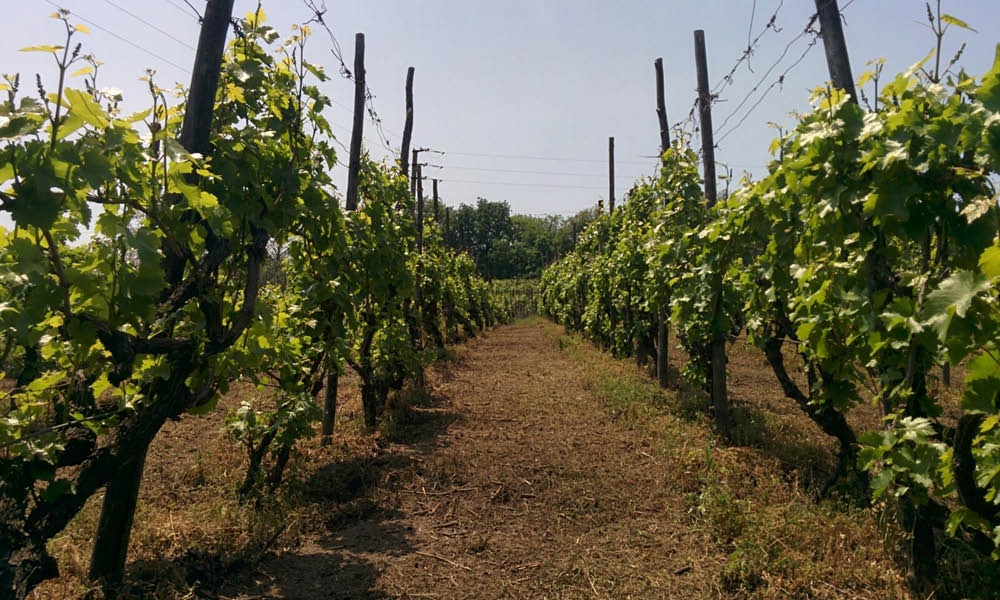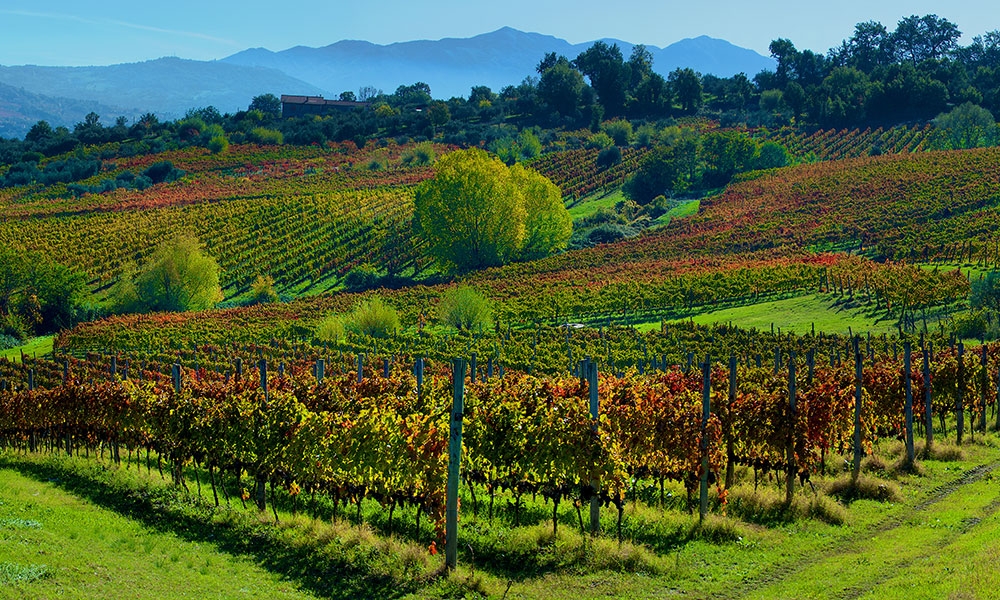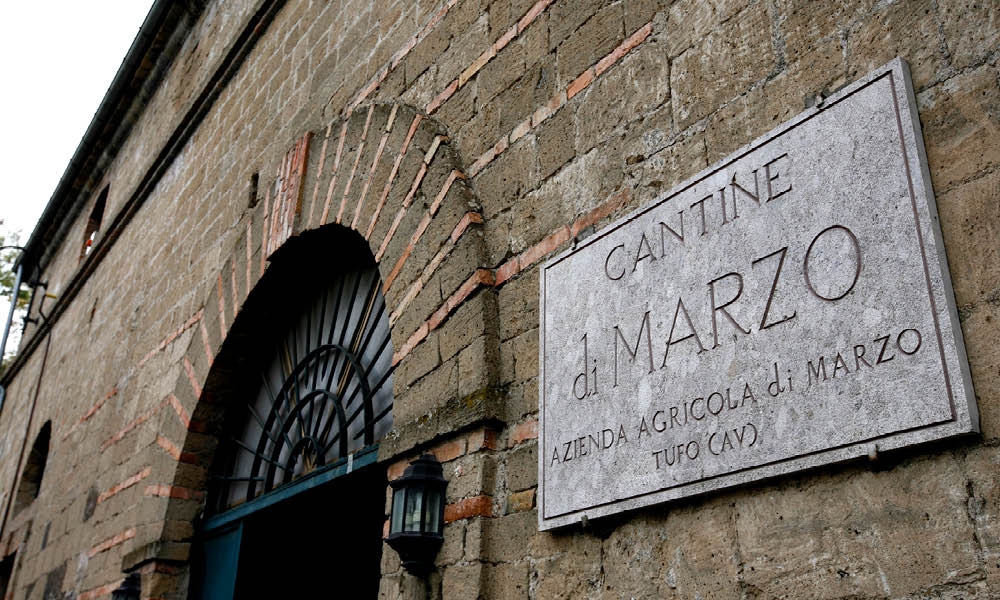
(TUFO – AVELLINO) Cantine di Marzo is a winery that produces wines in the Irpinia area. Famous for its Greco del Tufo, Colle Serrone, Ortale and Laure wines, the Taurasi reds, Irpinia Aglianico and many others.
Cantine di Marzo’s History and Philosophy
We are in the heart of Irpinia, an area where the soil is rich in volcanic rock tuff, which gives its name to the ancient village of Tufo, where the March Cellar has its headquarters. History teaches us that there is an origin for everything and wine is no exception, with Cantine di Marzo we are in front of those who gave rise to the famous Irpinian flagship of this area: the Greco di Tufo. A credit that goes to the progenitor Scipione di Marzo , who had the intuition, in 1647 escaping from his hometown San Paolo Belsito near Nola besieged by the plague, to bring with him some rooted vines of white grape variety, which he then planted in Tufo where in the meantime he took refuge and which at the time were called ofGreco del Vesuvio , becoming the inventor of Greco di Tufo. In fact, the March Cellars have a winemaking tradition that dates back to over 370 years ago , but officially they have been registered with the Avellino Chamber of Commerce as a Farm since 1833 , however, it remains a striking example of how Campania viticulture has its roots in the ‘antiquity.
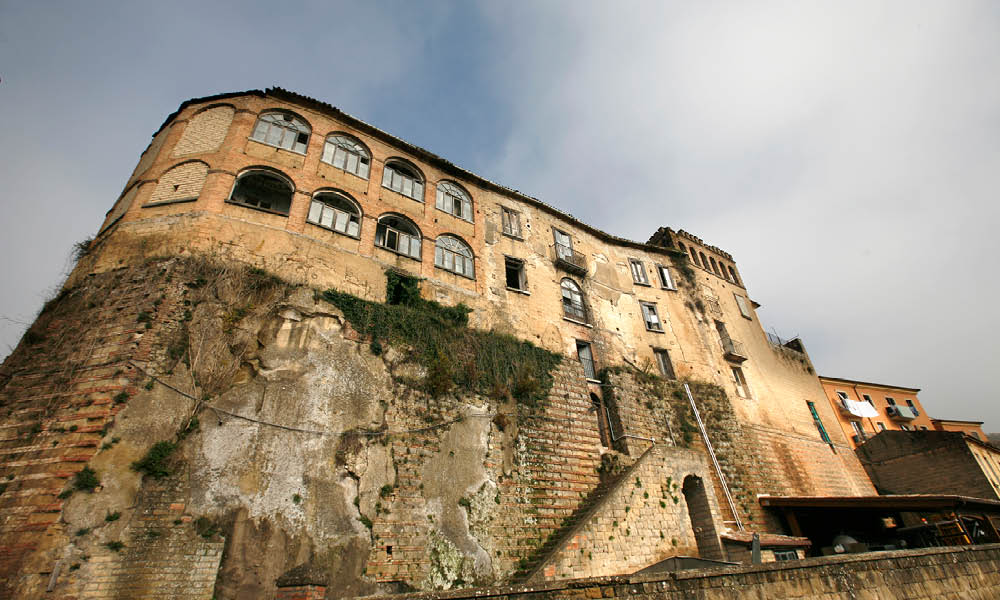 In 2009 the Cantina di Marzo passed into the hands of the current owner, Ferrante di Somma,descended from the maternal grandmother, from the Di Marzo family, giving the company a new imprint, where the philosophy is to strategically target zoning, aimed at increasingly enhancing the particularities and uniqueness of the Tufo terroir. The 23 hectares of vineyards of the Greco and Aglianico farm, each with its own specific identity, extend in particular in the San Paolo and Santa Lucia districts and in the municipality of Tufo, at an altitude ranging from 250 to 500m above sea level. The soils are mainly of medium mixture of clay, limestone and, above all, fossil sulfur with which Tufo soils are particularly rich,characteristic that makes the wines produced here unique. Above all on these lands in 1866 a sulfur mine was discovered by an ancestor Francesco di Marzo, which then developed into an industry until the 80s of the last century.
In 2009 the Cantina di Marzo passed into the hands of the current owner, Ferrante di Somma,descended from the maternal grandmother, from the Di Marzo family, giving the company a new imprint, where the philosophy is to strategically target zoning, aimed at increasingly enhancing the particularities and uniqueness of the Tufo terroir. The 23 hectares of vineyards of the Greco and Aglianico farm, each with its own specific identity, extend in particular in the San Paolo and Santa Lucia districts and in the municipality of Tufo, at an altitude ranging from 250 to 500m above sea level. The soils are mainly of medium mixture of clay, limestone and, above all, fossil sulfur with which Tufo soils are particularly rich,characteristic that makes the wines produced here unique. Above all on these lands in 1866 a sulfur mine was discovered by an ancestor Francesco di Marzo, which then developed into an industry until the 80s of the last century.
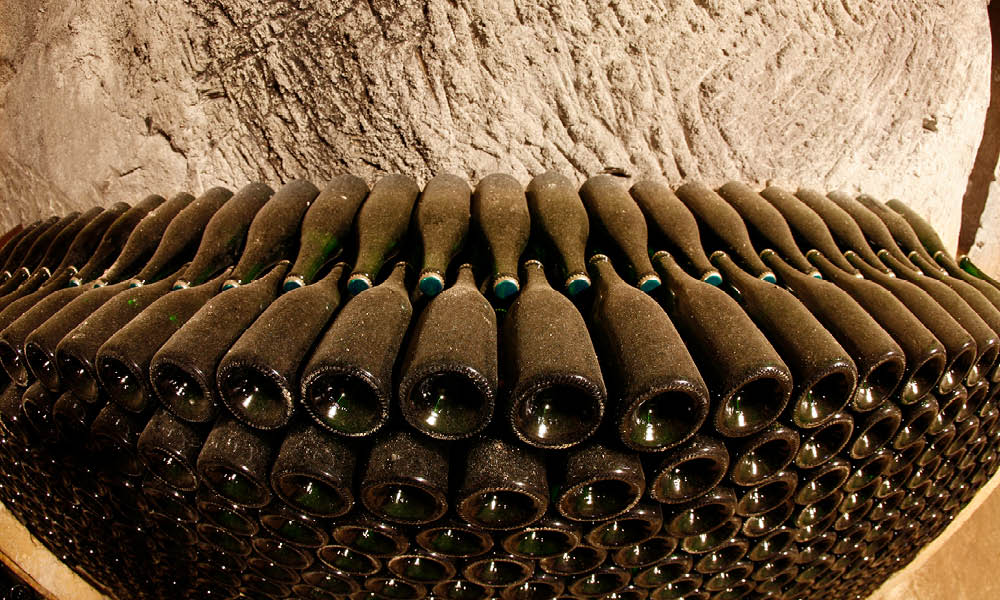 The ancient cellars are located in the heart of the Di Marzo palace and have preserved the original structure until today and develop in the caves and tunnels dug into the tuff side of the town. The work in the cellar is guaranteed by state-of-the-art winemaking techniques and winemaking studies and curated by Vincenzo Mercurio . The line produced by Ferrante di Somma is affected by his experiences abroad, especially in Burgundy,and it is the result of a research and specialization work aimed at enhancing all the nuances of the grape variety and its versatility. In fact, the March Cellars boast a record: to have produced the first Greco di Tufo Spumante docg “Twenties” Classic Method Brut.
The ancient cellars are located in the heart of the Di Marzo palace and have preserved the original structure until today and develop in the caves and tunnels dug into the tuff side of the town. The work in the cellar is guaranteed by state-of-the-art winemaking techniques and winemaking studies and curated by Vincenzo Mercurio . The line produced by Ferrante di Somma is affected by his experiences abroad, especially in Burgundy,and it is the result of a research and specialization work aimed at enhancing all the nuances of the grape variety and its versatility. In fact, the March Cellars boast a record: to have produced the first Greco di Tufo Spumante docg “Twenties” Classic Method Brut.
The wines of Cantine di Marzo
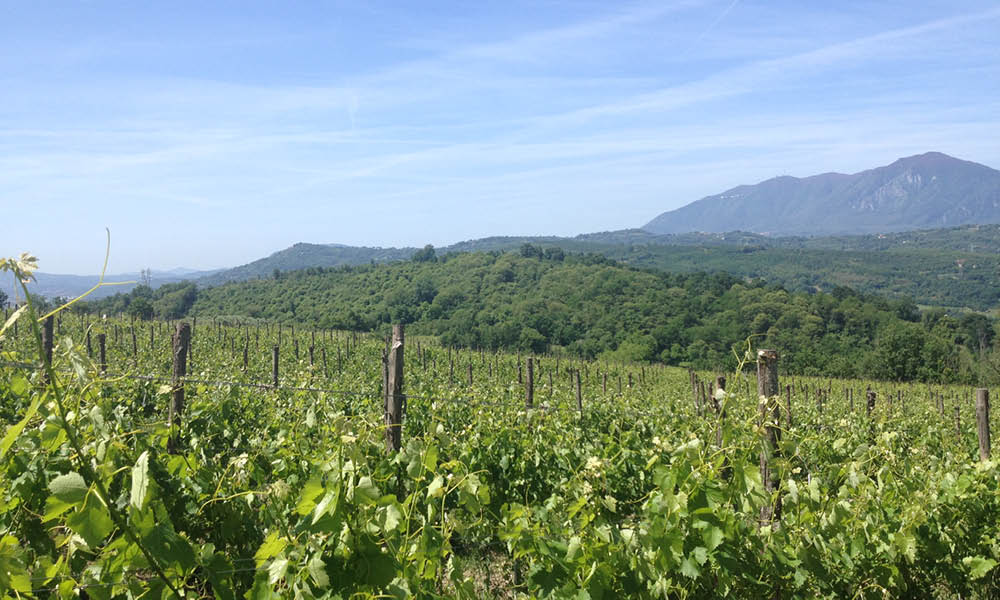 That the Greco di Tufo Docg of the classic line is among the traditional products this is implied, but the company also offers three very interesting Greco di Tufo Docg crus and produced in very limited quantities: Colle Serrone, Ortale and Laure, which reflect the soul of the three places from which they are produced. But the whole line is of value, from the red Irpinia Aglianico doc, to the Taurasi docg, the white Fiano di Avellino. It should be noted that Di Marzo also produces an excellent Grappa , of fine fresh pomace of Greco di Tufo docg.
That the Greco di Tufo Docg of the classic line is among the traditional products this is implied, but the company also offers three very interesting Greco di Tufo Docg crus and produced in very limited quantities: Colle Serrone, Ortale and Laure, which reflect the soul of the three places from which they are produced. But the whole line is of value, from the red Irpinia Aglianico doc, to the Taurasi docg, the white Fiano di Avellino. It should be noted that Di Marzo also produces an excellent Grappa , of fine fresh pomace of Greco di Tufo docg.
[wptabs id=”24787″]
Info & Contacts Cantine di Marzo
Address: SS371, 83010 Tufo AV
Tel: +39 0825 998022
Website: www.cantinedimarzo.it
e-mail: info@cantinedimarzo.it
Wine tastings
Direct Sales



